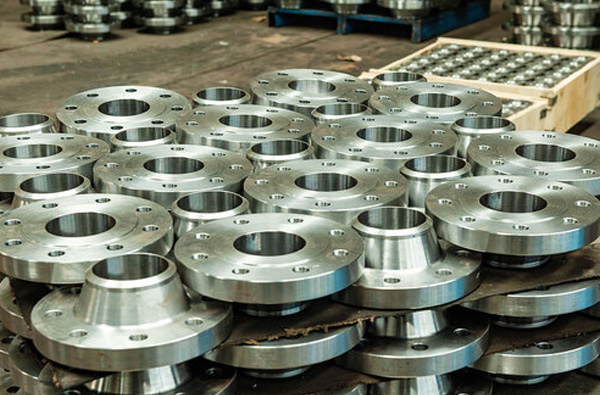Hello, welcome to Shanxi Huang flange pipe fittings Co., Ltd's official website!

Hotline:+86-13803430242
What are the methods to test the temperature of die-forged parts?
- Categories:Industry news
- Author:
- Origin:
- Time of issue:2022-06-29
- Views:0
(Summary description)The forging temperature range should be determined in such a way that the metal has high plasticity and small deformation resistance within the forging temperature range, and the forgings can be made with the desired organization and properties. Under this premise, the forging temperature range should be as wide as possible, in order to reduce the number of forging fires, reduce consumption, improve production efficiency and facilitate operation, etc.
What are the methods to test the temperature of die-forged parts?
(Summary description)The forging temperature range should be determined in such a way that the metal has high plasticity and small deformation resistance within the forging temperature range, and the forgings can be made with the desired organization and properties. Under this premise, the forging temperature range should be as wide as possible, in order to reduce the number of forging fires, reduce consumption, improve production efficiency and facilitate operation, etc.
- Categories:Industry news
- Author:
- Origin:
- Time of issue:2022-06-29
- Views:0
The forging temperature range should be determined in such a way that the metal has high plasticity and small deformation resistance within the forging temperature range, and the forgings can be made with the desired organization and properties. Under this premise, the forging temperature range should be as wide as possible, in order to reduce the number of forging fires, reduce consumption, improve production efficiency and facilitate operation, etc.
The basic method to determine the temperature range of die forgings is to use the alloy phase diagram, plasticity diagram, resistance diagram and recrystallization diagram to make a comprehensive analysis of plasticity, deformation resistance and forging properties, and to determine a reasonable forging temperature range, and to verify and modify it in the production practice.
The alloy phase diagram can visually represent the phase composition of various compositions in the alloy system at different temperature intervals. Generally, single-phase organization has better plasticity and lower resistance than multi-phase organization. The multi-phase organization has different properties of each phase, which makes the deformation uneven, and the matrix phase is often divided by another camera in a long time, so the plasticity is low and the deformation resistance is increased. When forging, the alloy should be in a single-phase state as much as possible in order to improve the process plasticity and reduce the deformation resistance. Therefore, first of all, the forging temperature range should be selected appropriately according to the phase diagram.
Zhangqiu forging plant: plasticity map and resistance map is a specific grade of metal, through the hot stretching, hot bending or hot upsetting and other test zou mapped out on the plasticity, deformation resistance with the temperature of the curve. In order to better meet the actual forging production. Commonly used dynamic and static load equipment for hot upsetting test, so as to reflect the impact of deformation speed on recrystallization, phase change and plasticity, deformation resistance. The plasticity and resistance diagrams of nickel-based off-temperature alloys and other high-temperature alloys, based on them and other information determined by the starting forging temperature of 1100-1150°C, the final forging temperature of 98 (TC, forging temperature range of 120 ~ 170°C .
The recrystallization diagram represents the relationship between the deformation temperature, the degree of deformation and the grain size of the forgings, and is measured through tests. It is an important reference value for determining the forging temperature and deformation degree of the last deformation process. For forgings with grain size requirements (e.g. high temperature alloy forgings), the forging temperature often needs to be checked and corrected according to the recrystallization diagram.
Scan the QR code to read on your phone
Recommended news

Equality, mutual benefit and common development
Shanxi huanguan Flange pipe fittings co., LTD 晋ICP备16001925号-1 Powered by 300.cn SEO



 whatsApp
whatsApp E-mail
E-mail Message
Message 